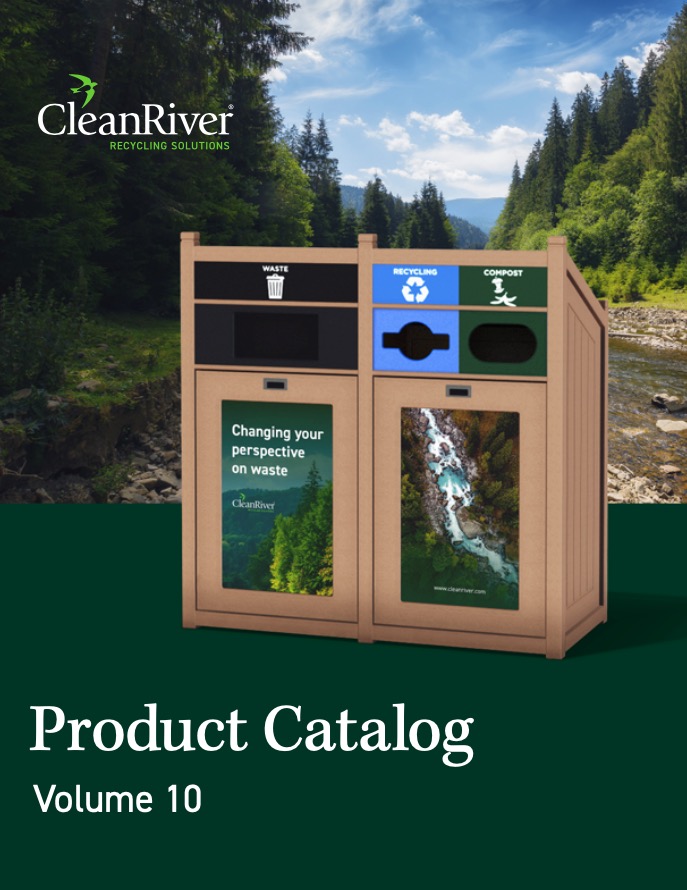Share
Recycling has become a fundamental part of sustainable waste management practices worldwide. To encourage recycling and make it accessible, recycling bins are a necessity.
However, when it comes to choosing recycling bins, it’s essential to consider whether they will be placed indoors or outdoors. Both indoor and outdoor recycling bins have their unique advantages and considerations. In this blog post, we’ll explore the key factors to help you make the right choice for your specific needs.
Indoor Recycling Bins
Advantages
Clean and Neat: Indoor recycling bins are typically located within buildings or enclosed areas, keeping them clean and free from exposure to the elements. This ensures that recyclables stay dry and uncontaminated.
Enhanced Aesthetics: Indoor bins can be designed to complement the interior decor of a facility. They often come in various styles, colours, and materials to seamlessly integrate with their surroundings.
Controlled Environment: Indoors, you have greater control over temperature and humidity, which can be essential for preserving the quality of recyclable materials such as paper and cardboard.
Security: Indoor recycling bins are less likely to be subjected to vandalism or tampering. They are generally more secure and protected from theft or damage.
Considerations
Space Limitations: Indoor recycling bins may require dedicated space within your facility, which could impact the layout and design of your interior.
Maintenance: Indoor bins still need regular maintenance, such as emptying and cleaning. However, the frequency may be less than outdoor bins.
Accessibility: Ensure that indoor bins are conveniently located and accessible to all occupants to promote recycling participation.
Outdoor Recycling Bins
Advantages
Convenience: Placing recycling bins outdoors makes them easily accessible to a larger audience, including passersby, visitors, and employees.
Visibility: Outdoor bins are often more visible, serving as a reminder and encouragement for people to recycle when they are in public spaces.
Capacity: Outdoor recycling bins are typically larger and can handle more volume, making them suitable for high-traffic areas.
Weather Resistance: Outdoor bins are designed to withstand various weather conditions, ensuring that recyclables stay protected even in rain, snow, or intense sunlight.
Considerations
Exposure to Nature: While outdoor recycling bins are designed to be weather-resistant, they may still expose recyclables to the elements, which can impact the quality of materials like paper and cardboard.
Maintenance: Outdoor bins may require more frequent emptying and maintenance due to higher usage and exposure to outdoor conditions.
Vandalism and Tampering: Outdoor bins are more susceptible to vandalism and tampering, so choosing durable and secure models is essential.
Making the Right Choice
When deciding between indoor and outdoor recycling bins, consider the following factors:
Location: Where will the recycling bins be placed? If indoors, ensure they are strategically located to promote recycling. If outdoors, choose locations with high foot traffic.
Material Types: Consider the types of materials you will be recycling. Some materials are more sensitive to weather conditions and may require indoor bins for protection.
Budget: Your budget will play a role in the selection of recycling bins. Outdoor bins are typically more robust and weather-resistant, which can affect their cost.
Usage: Estimate the expected usage and volume of recyclables to determine the capacity needed for your bins.
Aesthetics: Think about the visual impact of the bins. Indoor bins can be customized to match your interior decor, while outdoor bins should be visually appealing and easy to spot.
Conclusion
In conclusion, both indoor and outdoor recycling bins play a crucial role in promoting recycling efforts. The choice between them should be based on your specific needs, location, budget, and the materials you intend to recycle. Regardless of your choice, the goal remains the same: to make recycling convenient and accessible, encouraging individuals to participate in sustainable waste management practices.

